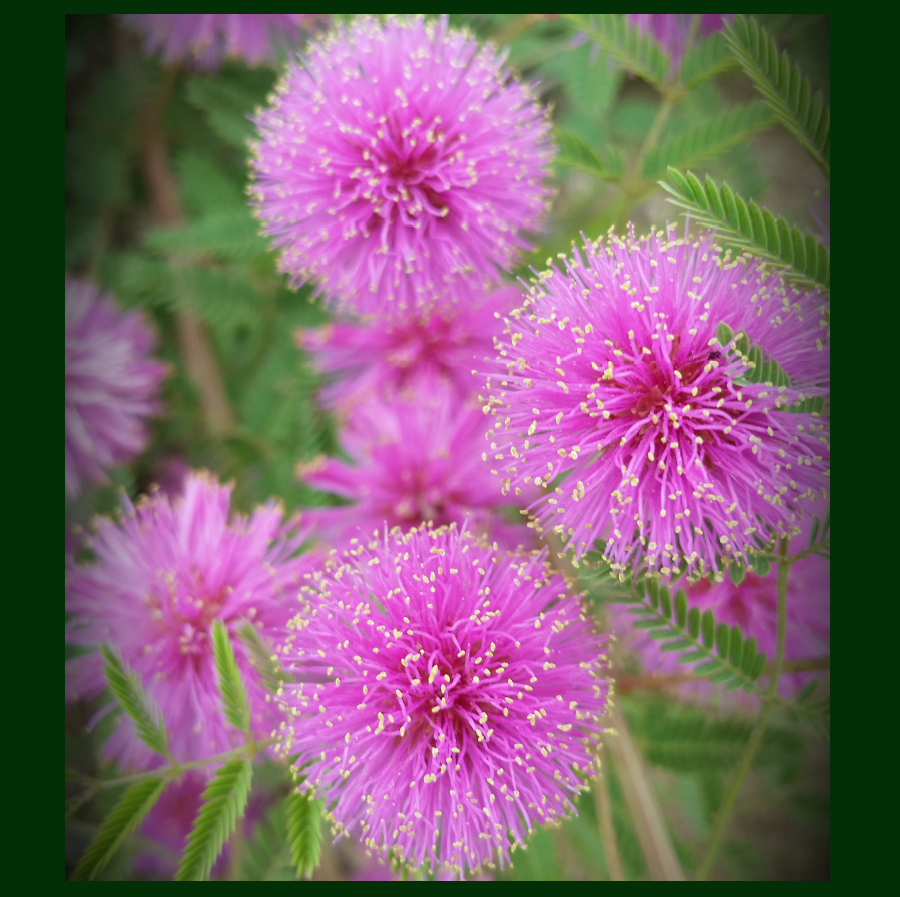What are legumes? And why do we want them in the landscape? Legumes are plants which produce bean-like pods of seeds and produce their own nitrogen, with the aid of a nitrogen-fixing bacteria. By putting more legumes in the landscape, we can help our gardens flourish and reduce the need for extra, synthetic fertilizers. Nitrogen is one of the more important nutrients garden plants need.
What does nitrogen do? Nitrogen is important because it is as essential component of chlorophyll, which plants use to make sugar from sunlight, which in turn are used to help plants grow. Also, nitrogen is a part of all amino acids, and is part of nucleic acids, which are in DNA. So it is beneficial to have plants which produce their own nitrogen. And these same plants do some sharing.
How Do Legumes Fix Nitrogen?
They do not. The bacteria, Rhizobium species do. These bacteria fix onto the root of a legume and invade, creating a nodule or gall. The plant supplies the bacteria with sugars (energy) and nutrients, and the bacteria produces ammonia from nitrogen gas present in the soil and air. The ammonia is used by the plant to build DNA, amino acids, and more. Plants growing in close association with legumes benefit from the production of ammonia. Death of legumes also results in ammonia for surrounding plants and animals to use.
If you get the chance to hike in a high quality prairie or remnant prairie/savannah, check out the plants. There are a variety of leguminous plants growing in these systems. This is why good prairies do not need fertilization to produce high quality hay. Likely at least 50% of the species of forbs in a prairie are a legume. So how can we add legumes to the landscape?

Adding Legumes to the Landscape
What do most think of first as legumes? Well, beans, peas, and soybeans probably top the list for most people. But besides crops; trees, shrubs, perennials, vines, and annuals can all be leguminous. There some 19,000 species of plants in the Bean Family (Fabaceae), and it is the 3rd largest plant family on earth, after Orchid Family and the Sunflower Family. In North America, there are around 2,700 species of legumes.
Even thought there are so many species of legumes, few are suited for the landscape. Unless you are planning to have a mostly meadow or prairie style landscape, many of these types of plants will not work in the landscape. But there are some, mostly trees and perennials which are both attractive for the landscape and leguminous.
Trees
Leguminous trees are more common in the landscape than you would believe. You probably have some already. I have several. Think about it, what trees do you have which produce bean-like pods? Anyways, there are 5 native trees which are grow well in the Central Great Plains, and some nonnatives as well. Besides being able to fix nitrogen, these trees are (some of them) have showy flowers and are good for wildlife/birds.
- Redbud – many people have this popular ornamental tree in their landscape. But it is more than ornamental, being a nitrogen fixing tree. Flower color can be white, pink, or various shades of pink/purple.
- Black Locust – unpopular as a landscape tree because of the thorns and messy pods, this large native shade tree makes excellent fence posts and firewood, and has very fragrant white or pink blooms. And it is fairly susceptible to locust borers.
- Honeylocust – the thornless varieties are used widely as large shade trees, and they are also mostly dioecious, meaning separate male and female trees, so podless is also a widely used trait.
- Kentucky Coffeetree – my favorite tree is also a legume. It is a large shade tree that is dioecious and has large, tropical looking compound leaves.
- Kentucky Yellowwood – a little used and known native tree, medium in size, and preferring a high pH soil area. It has fragrant, panicle flowers in spring, which are great for bees.
- Mimosa – less used and known, because it is hardy in Zones 6 to 10, this flowering ornamental has bright pink flowers in early summer. The compound leaves give it a tropical feel.

Shrubby Legumes
There are less true shrubs that are leguminous than trees or perennials worldwide. But there are some which are shrubby, or thicket forming, which do not form the nice tight shrubs we want in the landscape. Most of these are best planted in Meadows or shrub borders, not in the foundation plantings along the house.
- Leadplant – is best planted in a prairie or rocky garden area. It has gray-green leaves and bright purple flowers which are popular with native insects.
- Indigo Amorpha – similar to leadplant but taller and it prefers wet areas along streams and lakes. It has green leaves and bright purple flowers.
- Chinese Indigo – a small dense shrub which has an arching shape and small pale pink flowers in midsummer. It needs to be cut to the ground each spring for best growth.

Perennials & Vines
While there is a plethora of perennials and vines in the Fabaceae Family, few of them are suited for landscape use. Some of them are better for alternative lawns or to be used as cover crops. And some are better in prairie or Meadow Gardens. But a few will work in your typical landscape setting, and provide interest and nutrients for their neighbors.
- Wild senna – this medium sized plant does fit somewhat into a landscape, especially a cottage garden. It has yellow flowers favored by bumblebees and is a host plant for some of the sulphur butterflies.
- Carolina lupine – Doug Grimm promoted this one at the nursery several years ago. It looks like a yellow lupine, which it is.
- White or purple prairie clover – is a short lived perennial in the landscape, but long lived in prairie.
- Red clover – has large blossoms, great for bees, and is a good addition to the orchard lawn.
- Baptisia – there are a lot of cultivars of this perennial legume, and it is easy to add to the landscape, either cottage garden or foundation planting.
- American groundnut – is a perennial vining legume with an edible tuber. The flowers are quite showy in late summer.
- Wild licorice – is a small shrub-like perennial with greenish blossoms and seedpods which have small “hooks” on them for attaching to animal fur. It is best in the meadow or prairie.
- Catclaw Sensitive Brier – a vining groundcover like perennial which has bright pink blossoms and prickly vines and seedpods. It is good for rocky garden areas.
- American Wisteria – a wonderful full sun vine for large pergolas. Or you can train them into a tree or on a fence. It has beautiful purple flowers.

Insect Associations of Legumes
The aforementioned bacteria is not the only living creature to have a symbiotic relationship with legumes. There are many other animals and types of life which utilize or live in harmony with them. For the gardener, the most rewarding associations are those of pollinators and as hosts for pollinators. One of the most used purposes for leguminous plants is as soil and nitrogen companions in fruit tree guilds, orchards, and gardens. And as food crops. Many of our legumes are food crops across the earth; such things as peas, beans, peanuts, soybeans, carob, and more.
Pollinators
There are many different kinds of pollinators of plants. Of legumes, bees are mostly associated. Many different kinds of bees pollinate the different flower types of legumes. Also, a few of the more common skipper butterflies are to be seen on the groundcover clovers, red, white, and crimson. But in all, bees are the most common pollinators of legumes.

Insects Using Legumes as Host Plants
Besides pollinators, there are a variety of insects which either eat the seeds, plants, or flowers of legumes, as both adults and larvae. One common example is the leafcutter bee, which makes circular holes out of the edges of leaves or leaflets, mainly on tick trefoils (Desmodium), clovers, or alfalfa. And there is a variety of moths and butterflies using various legumes as host plants.
- Various legumes: Little yellow sulphur, Clouded sulphur, Cloudless sulphur, Orange Sulphur, Eastern Tailed Blue butterfly, Funereal duskywing, Wild indigo duskywing, Marine blue, Indigo stem borer, Silver spotted skipper, Genista broom moth
- Honeylocust & black locust: Riley’s lappet moth, bisected honeylocust moth, honeylocust moth, orange wing moth, Moon lined moth
- Redbud: Redbud leaffolder moth, Emperial moth

Conclusion
Legumes are an everyday part of many types of landscapes across the world, both man-made and natural. With over 19,000 species, you are sure to find a few to go into your personal landscape. Try to discover what plants you already have which are legumes, and see how many more you can get to add to your garden.
Happy planting!




